Nature’s Pathways
The urgency of climate change means we will likely need to deploy all available options to constrain the climate crisis. However, when selecting what to do in a specific location, the protect, manage, restore hierarchy can help decision makers think through the most cost-effective, climate-effective, and biodiversity-effective options.
By first protecting the world’s natural ecosystems from unsustainable practices and degradation, we protect their ability to safeguard carbon stores, provide critical ecosystem services and boost resilience to the impacts of climate change.
Forests cover 31% of the world’s land mass and hold as much carbon as the atmosphere, making them the most important ecosystem for the global carbon cycle. Deforestation is the single largest component of emissions from land-use change; and avoiding deforestation, reforestation and forest management hold the bulk of global mitigation potential. Forests have been a focus of climate policy for decades, and the state of science, economics and policy is fairly advanced.
The Paris Climate Agreement stated that countries should protect and enhance forests in order to maintain and create carbon ‘sinks’. To this end, the researchers located the greatest additional emissions reduction potential in reforestation, through tree-planting and natural regeneration in formerly forested lands with less than 25% tree cover, while avoiding areas cleared for crop production. Reforestation can deliver 3 gigatonnes of cost-effective carbon emissions reduction by 2030, equivalent to taking 642 million gasoline-burning cars off the road, 5% more than through avoided forest conversion. Both of these pathways complement the need to maintain the absorptive capacity of intact ecosystems, especially intact forests, which take up a net amount of around 11 gigatonnes of CO2 per year at little incremental cost beyond protective measures.
Natural forest management meanwhile offers nearly one gigatonne (882 million tonnes) a year in cost-effective emissions reductions, equivalent to taking 189 million cars off the road, through the wider deployment of sustainable forestry practices such as reduced-impact logging (RIL), liana cutting and extending harvest cycles, and without reducing wood production.
Indigenous Peoples and local communities safeguard vast reservoirs of forest carbon and are the world’s most effective guardians against deforestation. IP and LCs manage more than one-fifth of the forest carbon stored in tropical and subtropical countries. These groups possess knowledge and solutions vital to restoring ecosystems and carbon sinks. They are the first impacted and most vulnerable to climate events. To protect forests governments must urgently secure the tenure and protection of the territories of these groups. Parties of the Paris Agreement must fully recognising their role as stewards of nature as well as their right to Free, Prior and Informed Consent, whilst also facilitating direct financing for their stewardship of critical ecosystems.
Forests clean our air, enhance water security, support critical biodiversity and serve as the world’s oldest and most proven carbon storage technology.
Select a pathway to learn more:
Every year, millions of hectares of native forests are cleared for other land uses, including croplands, grazing lands and tree plantations. In the process, most of the organic carbon stored in the trees is lost to the atmosphere.
We define forests as land with trees covering more than 25% of its area, not including wetlands. Halting deforestation is necessary, with some rare exceptions. For example, in some tropical countries, rural farmers still practice ancient and sustainable crop-rotation practices that involve clearing forests at the same rate that they are allowed to regenerate. However, most deforestation is not sustainable and is driven by commercial agriculture. There are many opportunities to improve production on existing agricultural lands and avoid unsustainable forest conversion. Avoided forest conversion is particularly important in the tropics, which have the highest rates of forest loss.
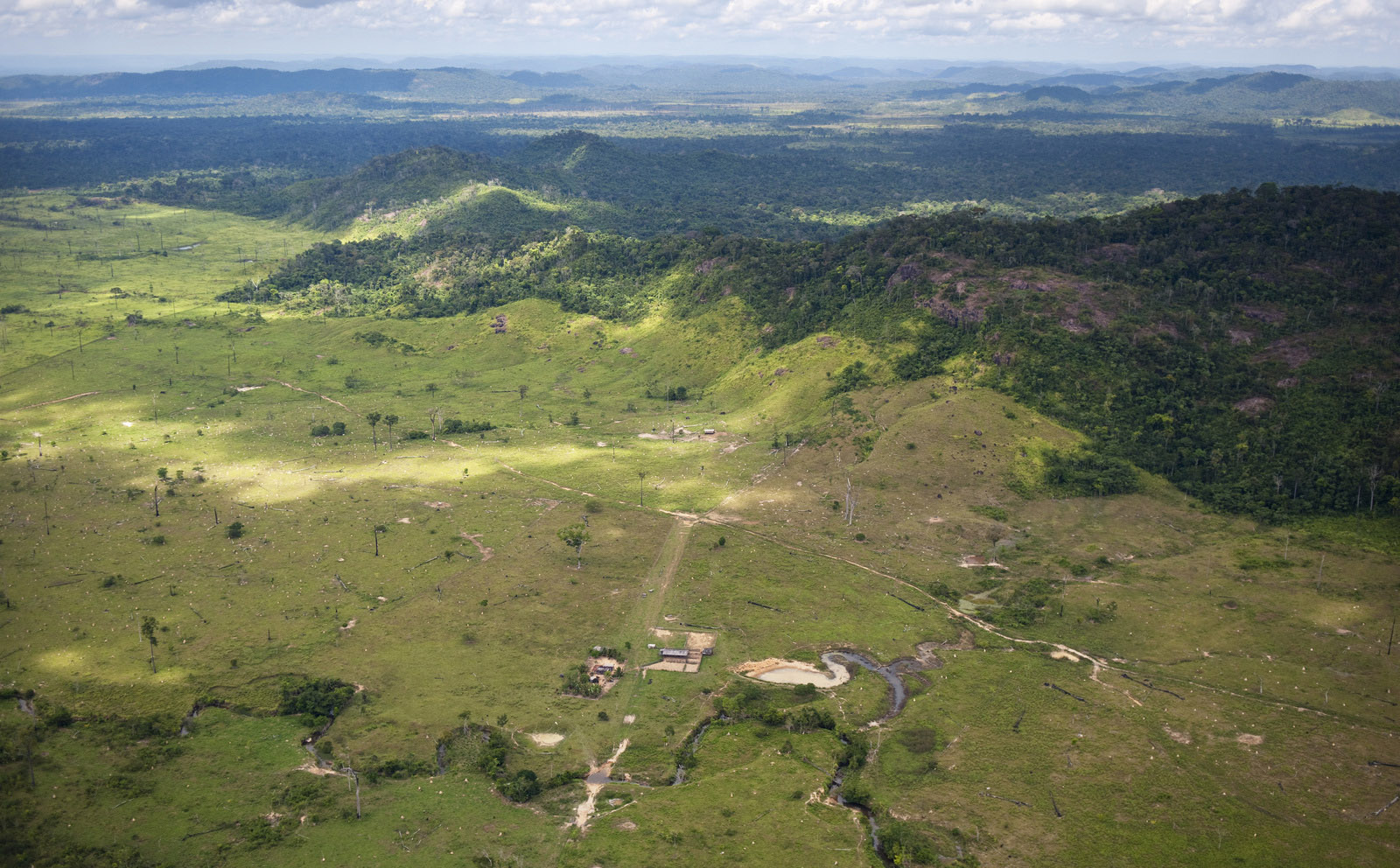
The Numbers
Each year, some 9 million hectares of forest are lost – an area larger than South Carolina or Austria. Avoiding most of that deforestation would prevent the release of nearly 3 gigatonnes of carbon dioxide equivalent per year (GtCO2e/year). That’s comparable to the emissions from 620 million passenger vehicles per year.
The Challenges
The major challenges to preventing deforestation are political and economic. Avoiding deforestation, or protection of forests, will require establishing large-scale incentives and regulatory mechanisms to address the major sources of deforestation, such as cattle ranching in the Amazon or palm oil production in Indonesia. Also, rural communities that depend on unsustainable forest clearing will need help developing alternative livelihoods, preferably as part of the new restoration economy. Focusing on single regions will not be enough, however. When forest loss is averted in one region, it is often “transplanted” to another part of the world. To prevent deforestation, we must take an integrated, global approach.
Moving Forward
Avoiding forest conversion is a relatively low-cost pathway that’s ready to be put into practice immediately. In the past, critics have argued it was premature to take action given the limitations of measuring and monitoring the world’s forests. As measurement and monitoring techniques have improved, this argument is no longer a significant barrier to action. Despite some political and economic hurdles, we have the tools we need to stop deforestation now.
Around the world, 2.8 billion people burn wood for their basic energy needs. The majority of that fuelwood is used for cooking in developing countries.
Improving cook stoves to burn more efficiently would reduce the amount of wood taken from forests, storing more carbon in trees. In addition, improved cook stoves would reduce smoke inhalation, providing significant health benefits, especially for women and young children.
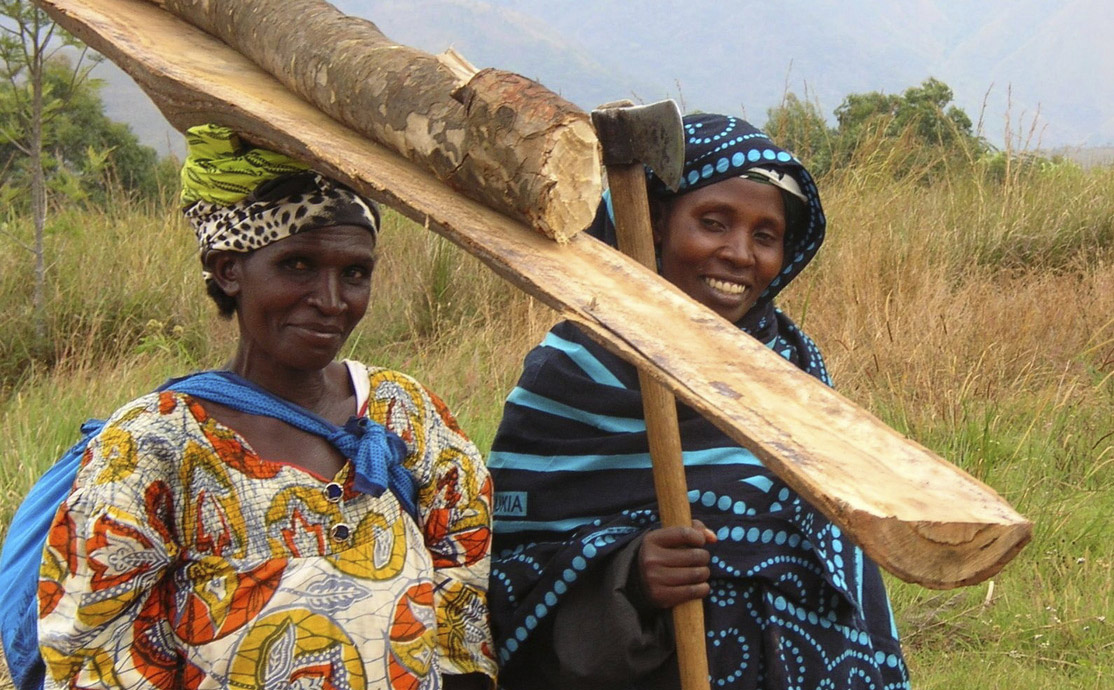
The Numbers
Reducing fuelwood harvest could prevent the release of 1 gigaton of carbon dioxide equivalent per year, equating to about 2% of global CO2 emissions. That’s comparable to the emissions from 23 million passenger vehicles per year.
The Challenges
The challenges of reducing fuelwood harvest are mostly logistical. There can be cultural barriers to convincing people to change the way they cook. Switching to clean cook stoves and alternative fuels, such as gas, can have high upfront costs for homeowners. Further, distributing new technology to remote villages can be difficult. Due to these limitations, this is a comparatively high-cost pathway.
Moving Forward
Despite some practical challenges, this is a pathway that could be implemented immediately. Using naturebase data, we estimate that improving cook stoves to burn more efficiently could reduce 165 MtCO2e/yr in emissions coming from wood fuel harvest in African forests.
Grasslands cover as much as one-third of the world’s lands, and grazing is the most extensive land use on the planet. Grasslands store fairly high levels of carbon in their soils, but a significant fraction is being lost through conversion to cropland or overgrazing. Livestock are also responsible for the majority of all non-CO2 emissions from land use.
About 10% of the earth’s land area is intensively cultivated to produce crops. Most agricultural soils have lost a large fraction of their original soil carbon, and there is considerable potential to restore this through better management. More efficient use of fertilizers can also have a large impact on global emissions of nitrous oxide, another of the six principal greenhouse gases.
In the grasslands biome, the researchers identified cropland nutrient management as offering the greatest cost-effective emissions reductions, through reduced use of fertilizers and sprays that release nitrous oxide, a greenhouse gas 300 times more potent than CO2, into the atmosphere. This would require reduction in the use of fertilizers and sprays employed by farmers worldwide, contributing a reduction of 635 million tons of carbon emissions equivalent a year by 2030, like taking 134 million cars off the road.
The next agriculture revolution will require solutions that not only increase food production, but also sustain the health of our communities, our land and our climate.
Select a pathway to learn more:
As populations grow and the demand for food increases, grasslands and shrub lands around the world continue to be cleared for agriculture. When natural grasslands are tilled for planting, nearly half of the carbon stored in the soil surface is lost to the atmosphere.
Keeping natural grasslands and shrub lands intact and healthy will keep that carbon locked below ground, while the grasses and shrubs will continue pulling additional carbon from the atmosphere as they are grown.

The Numbers
Globally, every year roughly 1.7 million hectares of natural grasslands and shrub lands are being converted for crops or other uses—an area slightly larger than Connecticut or Kuwait.
In the United States, 77 percent of land converted to croplands between 2008 and 2012 was from grasslands. Agriculture is also crowding into grasslands in East Africa and West Africa.
Avoiding the conversion of grasslands would prevent the release of 35 million tonnes of carbon dioxide equivalent per year. That’s comparable to the emissions from 7.4 million passenger vehicles per year.
The Challenges
Feeding our growing planet remains a significant challenge. To avoid the conversion of grasslands, we must improve management of the world’s existing croplands and continue efforts to intensify sustainable agriculture on those lands.
In the U.S., avoiding grassland conversion will require bioenergy and agriculture policies that ensure corn-based bioenergy production does not result in net carbon emissions.
Moving Forward
Due to the high demand for arable land, avoiding grassland conversion is a relatively high-cost pathway. However, this strategy can be implemented immediately, assuming the necessary bioenergy and cropland management practices are put into place.
An encouraging sign is that the rate of grassland conversion to cropland is slowing. Since remaining grasslands are more likely to have soil conditions or irrigation challenges unsuitable for growing crops, it will be increasingly expensive to convert these lands. Additionally, natural grasslands provide pollination and pest suppression services that can actually increase productivity of adjacent croplands. Those costs and benefits will provide an economic incentive to increase productivity on existing croplands rather than turning additional grasslands into farms.
Freshwater wetlands cover less than 5% of the world’s land area, but store vast quantities of carbon per hectare in the form of peat soils. Protecting peatlands and rewetting drained peatlands can prevent massive carbon emissions, reduce destructive peat fires, and improve water quality.
Protection and restoration of coastal ecosystems (mangroves, salt marshes and seagrass beds—or ‘blue carbon’) has a relatively low global mitigation potential due to its small distribution but these ecosystems can store carbon at high rates per hectare. They often also provide significant benefits to society: supporting ocean fisheries, protecting coasts, tourism and filtering run-off and pollution that can be worth many thousands of dollars per hectare per year.
The greatest cost-effective emissions reduction potential in the wetlands biome was found to be through avoided peatland impacts—the protection of marshes and peat bogs are a more effective long-term carbon store than forests. It is estimated that 760,000 hectares of peatlands are lost globally each year, the majority being cleared and drained for palm oil developments. Their cost-effective protection could prevent 678 million tonnes of carbon emissions a year by 2030—comparable to removing 145 million cars from the streets.
Wetlands – freshwater and coastal – make up a small percentage of the world’s lands, but they have a higher actual storage of carbon per hectare of land than any other system.
Select a pathway to learn more:
Seagrass beds, mangroves and tidal marshes store large amounts of carbon, despite making up a relatively small portion of the planet’s total land area. They trap sediment and draw in carbon as they grow, much of this is later transferred into the rich organic soils held by their roots. The carbon can remain in the soil for thousands of years, making it one of the longest-term climate mitigation solutions. Around the globe, many of these coastal wetlands are converted for agriculture, aquaculture or urban development. The loss of healthy wetlands releases stored carbon into the atmosphere. Polluted runoff can also degrade the health of coastal wetlands, leading to an eventual release of carbon trapped in the soil. Preventing conversion and maintaining the health of coastal wetlands will allow these areas to continue storing and absorbing carbon from the atmosphere.

The Numbers
Coastal wetlands, also known as ‘blue carbon’ ecosystems include mangroves, tidal salt marshes and seagrass meadows. There are approximately 14.5 million hectares of mangroves, but there are still gaps in the data for mapping the extent of salt marshes and seagrasses: the estimated total cover of these three ecosystems is between 30 and 120 million hectares globally–less than 1% of the world’s total land area. However, they are being lost at an alarming rate: scientists estimate that worldwide, a seagrass meadow the size of a soccer pitch may be lost every 30 minutes.
Avoiding the conversion and degradation of coastal wetlands would prevent the release of 273 million tonnes of carbon dioxide equivalent per year. That’s comparable to the emissions from 58 million passenger vehicles per year.
The Challenges
Maintaining the health of coastal wetlands will require strategies specific to each region and each wetland type. In areas such as Southeast Asia, for example, where a portion mangrove forests are converted for aquaculture, new regulations and viable economic alternatives will be necessary to curb wetland loss.
Other challenges are technical. The rate at which salt marshes and seagrass beds are being lost is still uncertain. In particular, much more work is needed to map the locations and size of seagrass beds and salt marshes globally. National level maps do exist in a lot of places but there are gaps such as parts of African and South America.
Moving Forward
Avoiding coastal wetland conversion is a low-cost climate mitigation pathway. Many interventions (such as establishing protected areas, improving land tenure and enforcing land-use laws) can be put into place immediately. In the United States, for example, many states have enacted laws to protect tidal marshes, and Florida’s Mangrove Trimming and Preservation Act protects mangroves on uninhabited islands that are publicly owned or on lands set aside for conservation and preservation. Similar laws could be established to protect coastal wetlands around the world.
Peatlands are defined by soils that are continuously or seasonally saturated with water. The waterlogged soils prevent the breakdown of leaves, wood, roots and other organic material in the soil, allowing carbon to stay trapped underground. In some regions, peat soils are many meters thick and thousands of years old.
When peatlands are damaged, their stored carbon is lost to the atmosphere. Peatlands may be drained and converted to agricultural land or palm plantations. Often the drained peatlands are burned, further amplifying their carbon emissions. Preventing peatland damage will help to keep large amounts of carbon sequestered in the soil.
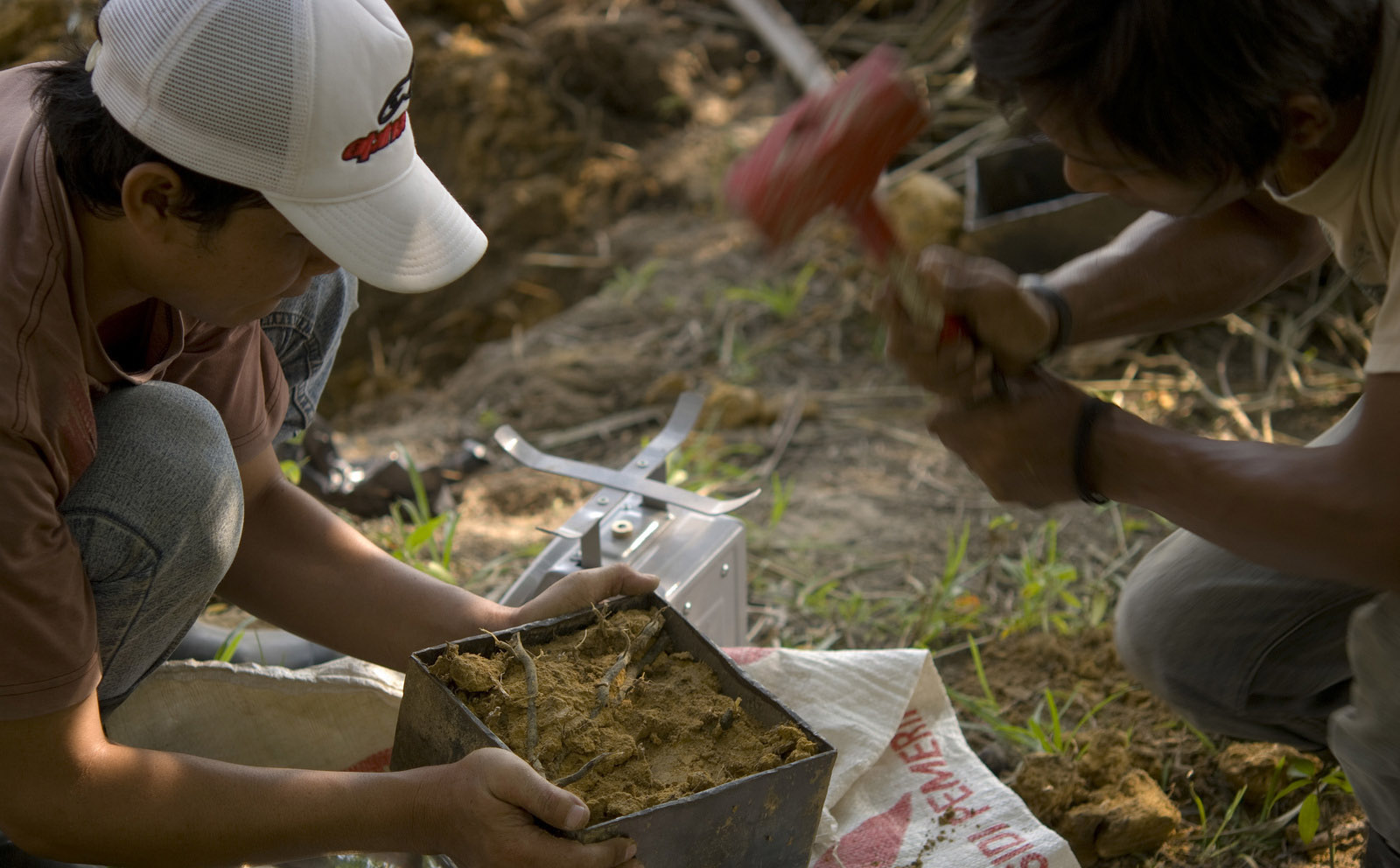
The Numbers
Worldwide, 760,000 hectares of peatlands are lost each year, an area almost as large as Puerto Rico, or roughly twice the size of Rhode Island.
Avoiding peatland impacts would prevent the release of 678 million tonnes of carbon dioxide equivalent per year (MtCO2e/year). That’s comparable to the emissions from 145 million passenger vehicles per year.
The Challenges
The biggest challenge to successfully avoiding peatland conversion will be monitoring and enforcement. Indonesia, for instance, is a hotspot of peatland conversion. But while there are regulations in place to protect peatlands, experience shows that they are frequently not enforced.
Moving Forward
Avoiding peatland loss is a low-cost pathway that could be implemented immediately. We estimate that 60 percent of the mitigation potential of avoiding peatland conversion could be achieved at a low cost.
Farming systems and working lands must shift from net carbon emitters to carbon sinks. Adapting and transforming food and agriculture systems to become more sustainable can get the world to net-zero in line with the Paris Agreement, build resilience, and store over 5 maximum gigatons of additional carbon, putting nature on a positive trajectory.
Forests cover one-quarter of the world’s land mass and hold as much carbon as the atmosphere, making them the most important ecosystem for the global carbon cycle. Deforestation is the single largest component of emissions from land-use change; and avoiding deforestation, reforestation and forest management hold the bulk of global mitigation potential. Forests have been a focus of climate policy for decades, and the state of science, economics and policy is fairly advanced.
The Paris Climate Agreement stated that countries should protect and enhance forests in order to maintain and create carbon ‘sinks’. To this end, the researchers located the greatest additional emissions reduction potential in reforestation, through tree-planting and natural regeneration in formerly forested lands with less than 25% tree cover, while avoiding areas cleared for crop production. This approach can deliver 3 gigatonnes of cost-effective carbon emissions reduction by 2030, equivalent to taking 642 million gasoline-burning cars off the road, 5% more than through avoided forest conversion. Both these pathways are complementary to the need to maintain the absorptive capacity of intact ecosystems, especially intact forests, which take up a net amount of around 11 gigatonnes of CO2 per year at little incremental cost beyond protective measures.
Natural forest management meanwhile offers close to a gigatonne (882 million tonnes) a year in cost-effective emissions reductions, equivalent to taking 189 million cars off the road, through the wider deployment of sustainable forestry practices such as reduced-impact logging (RIL), liana cutting and extending harvest cycles, and without reducing wood production.
Forests clean our air, enhance water security, support critical biodiversity and serve as the world’s oldest and most proven carbon storage technology.
Select a pathway to learn more:
Many of the world’s natural forests provide wood products critical to people’s lives and livelihoods. Halting all logging in natural production forests would achieve maximum carbon sequestration, but an end to logging is not realistic or necessary. Improving forest management practices will allow natural forests to store more carbon while maintaining wood production over the long term. Logging should be halted in some sensitive places, with the lost wood production made up by new wood production in some reforestation lands.
Extending harvest cycles, for example, allows trees to grow larger before they’re felled, increasing the average carbon stock across a working forest. Reduce-impact logging practices like cable winching can avoid damage to trees not harvested. Competing vegetation, such as vines, can be thinned to allow trees to grow faster and bigger. Implementing such techniques will allow our working forests to sequester more carbon.
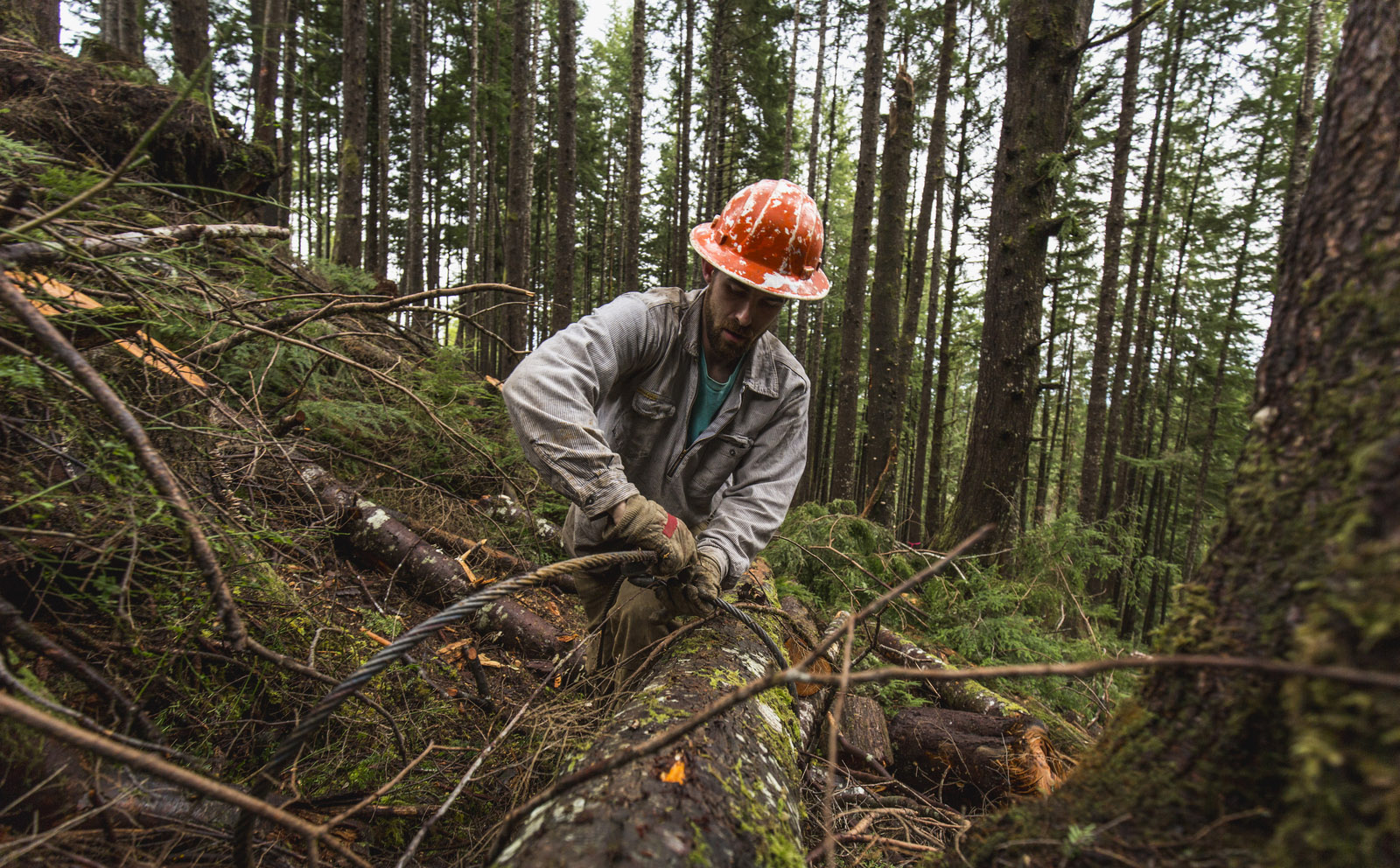
The Numbers
Improved natural forest management practices could be applied to some 2 billion hectares of wood-production forest worldwide, an area twice the size of the United States.
These improving practices (and halting harvests in some areas) could prevent the release of up to 882 million tonnes of carbon dioxide equivalent per year (MtCO2e/year). That’s comparable to the emissions from 189 million passenger vehicles per year.
The Challenges
One of the major challenges to improving forest management techniques is the instability of land tenure. Loggers without long-term rights to the land aren’t inclined to invest in sustainable forest management. Improving land tenure is particularly important for forests managed by communities with traditional use rights.
Moving Forward
Unlike reforestation and avoiding deforestation, improving natural forest management doesn’t require changing land use. Where stable land tenure exists, forest owners can improve forest health and carbon storage while also making their businesses more efficient and more sustainable.
Many improved forestry practices are low-cost, and some could deliver cost savings. Working with loggers and landowners to improve forestry practices and long-term planning strategies will be an important step toward moving this pathway forward. While some questions and challenges remain, implementation of this pathway could begin immediately.
Timber plantations are found across the globe, accounting for seven percent of the world’s total forest area. Plantations are typically managed on shortened harvest rotation lengths that optimize investment returns rather than longer rotations that would maximize yield for optimal broader economic and environmental benefits. Extending harvest rotation cycles would allow trees to absorb more carbon from the atmosphere while also increasing timber yields in tropical, subtropical, temperate and boreal forests.
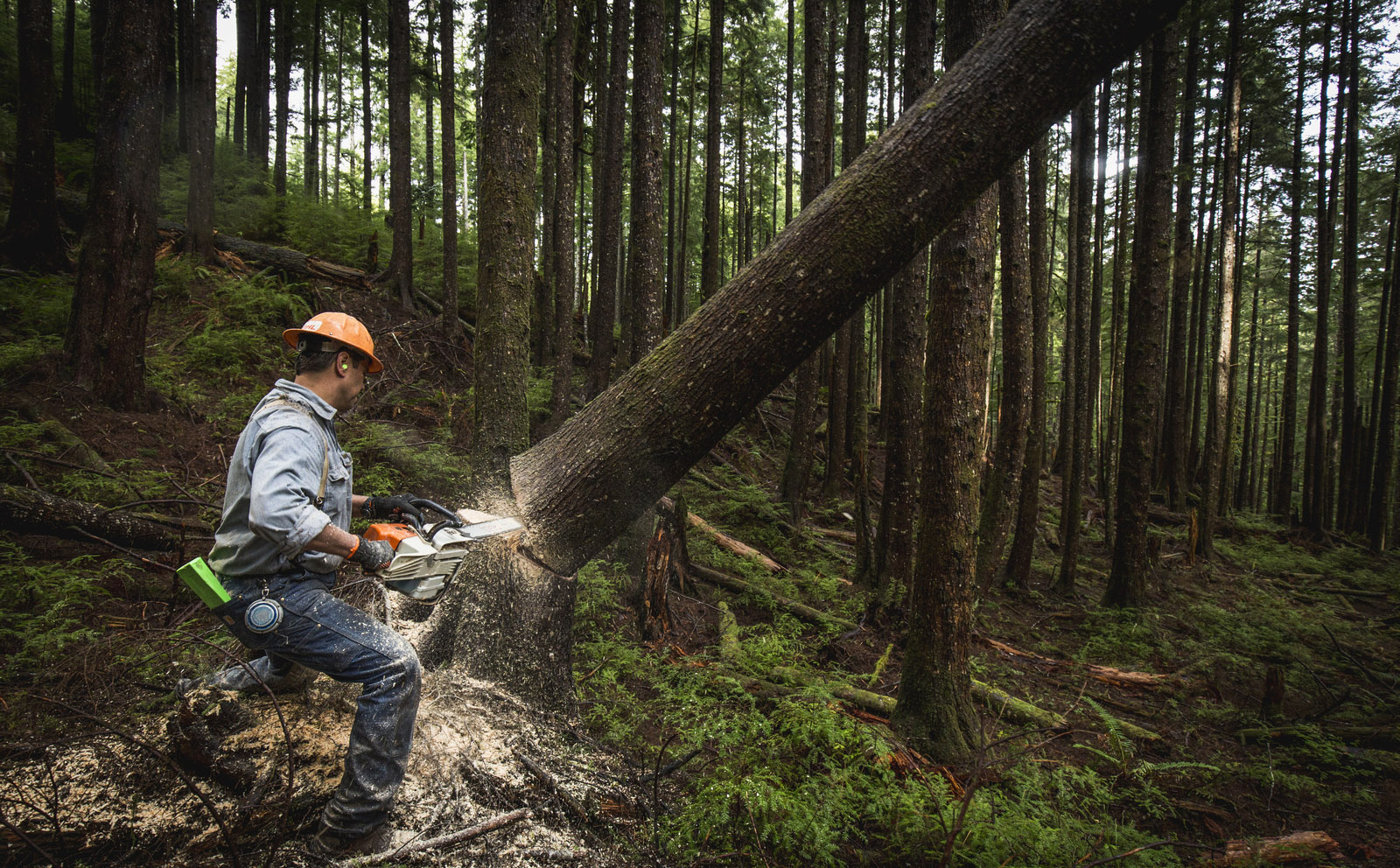
The Numbers
Timber plantations cover some 257 million hectares globally – an area about the size of the US state of Oregon.
Extending harvest cycles to increase carbon uptake in timber plantations would sequester an additional 266 million metric tons of carbon dioxide equivalent per year (MtCO2e/year). That’s comparable to the emissions from 56 million passenger vehicles per year.
The Challenges
More analyses are needed to estimate the specific economic opportunity costs of implementing this pathway in various forest regions around the world. Those opportunity costs would likely need to be covered by carbon or other incentives. While such an analysis should be fairly straightforward, the work has not yet been done for each region in question.
Moving Forward
While additional economic analysis is needed, we expect this will be a relatively low to moderate-cost pathway to implement. It is a straightforward change in practice that could begin almost immediately, without any changes to policy or land tenure.
Forest and savanna fires release large amounts of carbon into the atmosphere in a short amount of time. Ground fire is often a natural feature of healthy ecosystems, but uninformed past human interventions have left forests and savannas more susceptible to catastrophic fires. Better managing how and when forest and savanna burns can prevent excessive loss of carbon into the atmosphere.
This climate mitigation pathway involves three discrete types of fire management:
- Prescribed fires in fire-prone temperate forests to reduce emissions of biomass from the historic rate of wildfire losses.
- Prescribed early-season burns in the savanna to avoid higher emissions from late-season burns.
- Fire control practices in Amazonian forests to avoid unintended fires that degrade the forest (such as fire breaks at forest edges).
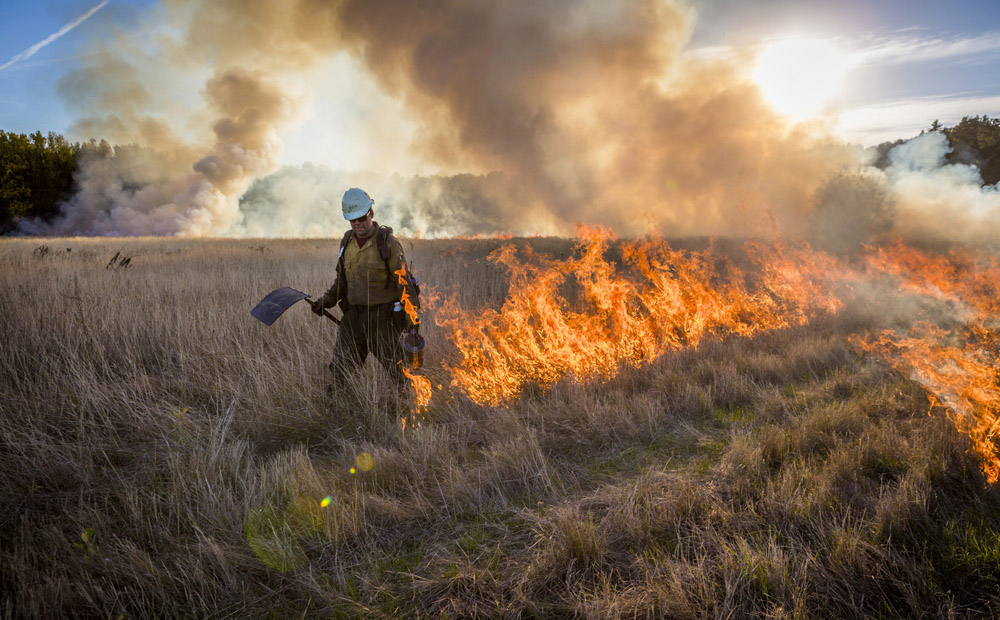
The Numbers
Fire management would prevent the release of up to 127 million metric tons of carbon dioxide equivalent per year (MtCO2e/year). That’s comparable to the emissions from 27 million passenger vehicles per year.
The Challenges
Improving fire management will require overcoming some challenges. Implementing prescribed fires and fire breaks will require an initial investment of upfront capital. And because fire management is not a one-time intervention, there will be ongoing annual costs.
Conservationists must also consider that prescribed fires will involve increased initial emissions to avoid future larger emissions. In addition, as it is not possible to know the precise location of future wildfires, fire management must occur routinely across a large area.
Moving Forward
As a result of these challenges, we estimate that fire management is a relatively higher-cost pathway. However, this pathway involves low-tech, well-understood fire management practices, which could be implemented immediately if the funds were made available.
Partnerships with local communities will be an important part of moving this pathway forward. Incentives and capacity building will be helpful in improving fire management, in storing more carbon and improving local livelihoods.
Grasslands cover as much as one-third of the world’s lands, and grazing is the most extensive land use on the planet. Grasslands store fairly high levels of carbon in their soils, but a significant fraction is being lost through conversion to cropland or overgrazing. Livestock are also responsible for the majority of all non-CO2 emissions from land use.
About 10% of the earth’s land area is intensively cultivated to produce crops. Most agricultural soils have lost a large fraction of their original soil carbon, and there is considerable potential to restore this through better management. More efficient use of fertilizers can also have a large impact on global emissions of nitrous oxide, another of the six principal greenhouse gases.
In the grasslands biome, the researchers identified cropland nutrient management as offering the greatest cost-effective emissions reductions, through reduced use of fertilizers and sprays that release nitrous oxide, a greenhouse gas 300 times more potent than CO2, into the atmosphere. This would require reduction in the use of fertilizers and sprays employed by farmers worldwide, contributing a reduction of 635 million tons of carbon emissions equivalent a year by 2030, like taking 134 million cars off the road.
The next agriculture revolution will require solutions that not only increase food production, but also sustain the health of our communities, our land and our climate.
Select a pathway to learn more:
After crops are harvested, large amounts of stems, husks, and other unusable plant material are left behind. That crop residue can be baked in special oxygen-free furnaces to convert it to a form of charcoal called biochar. The baking process, known as pyrolysis, locks much of the plant’s carbon into a solid form that doesn’t easily decompose, preventing the trapped carbon from decaying for decades or even centuries. When added back to croplands, some types of biochar can also improve soil health in various ways.
In this analysis, we considered only plant material left over from existing agricultural activity, and we did not consider agricultural residues already used for other activities (such as livestock feed). The calculations also account for the need for part of these residues to remain in the field to help maintain healthy levels of organic matter in cropland soils.
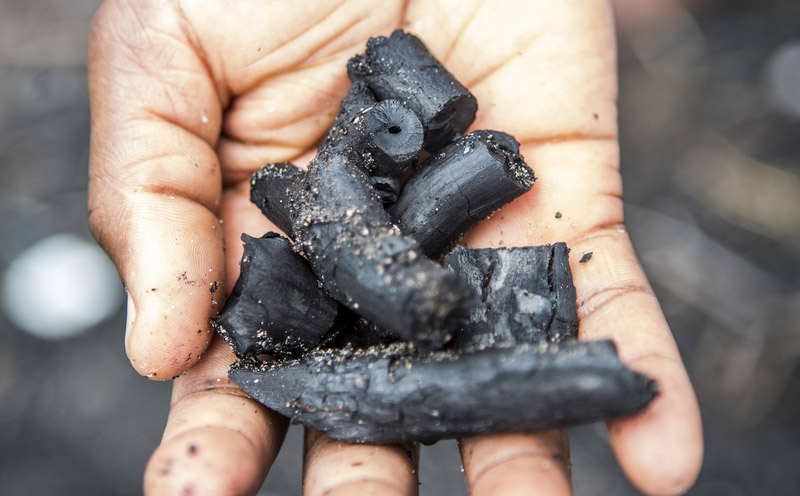
The Numbers
Converting part of the world’s unused agricultural residues to biochar could cost-effectively prevent the release of 331 million tonnes of carbon dioxide equivalent per year (MtCO2e/year) from decaying biomass. That’s comparable to the emissions from nearly 70 million passenger vehicles per year.
Reaching this scale will require operations converting half a billion tonnes of crop waste to biochar each year. That’s about 2-3 times the scale of current global charcoal production for fuel, although almost all of this currently comes from wood.
The Challenges
To create a market for biochar among farmers, we must first demonstrate its value as a soil amendment. To make that case, we need a better understanding of how this material will affect different types of agricultural soils.
There are also economic challenges to implementing biochar use on a wide scale. In many parts of the world, agricultural residues that can be easily collected are already gathered for feeding livestock or are burned to produce energy. In other places, the cost of harvesting agricultural residues can be too high to justify the production of biochar.
Moving Forward
Initially, biochar will probably be most feasible in developed areas where there is better infrastructure to harvest crop residues, better access to new technology and fewer competing demands for agricultural residues. However, as this technology matures, biochar could have a role in restoring degraded soils worldwide. It also has promise for storing water in soils in dry regions.
Because of its high cost, biochar production isn’t yet ready to be put into practice on a large scale. With further research and market development, however, it could become a viable pathway relatively soon.
When bare soil is exposed between crops, carbon stored in the soil is lost to the atmosphere. By planting cover crops on croplands that have an off-season fallow period, farmers can expand the length of time that photosynthesis occurs on cropland. This practice, also known as conservation agriculture, increases the amount of carbon stored in the soil, while also improving soil quality and fertility.
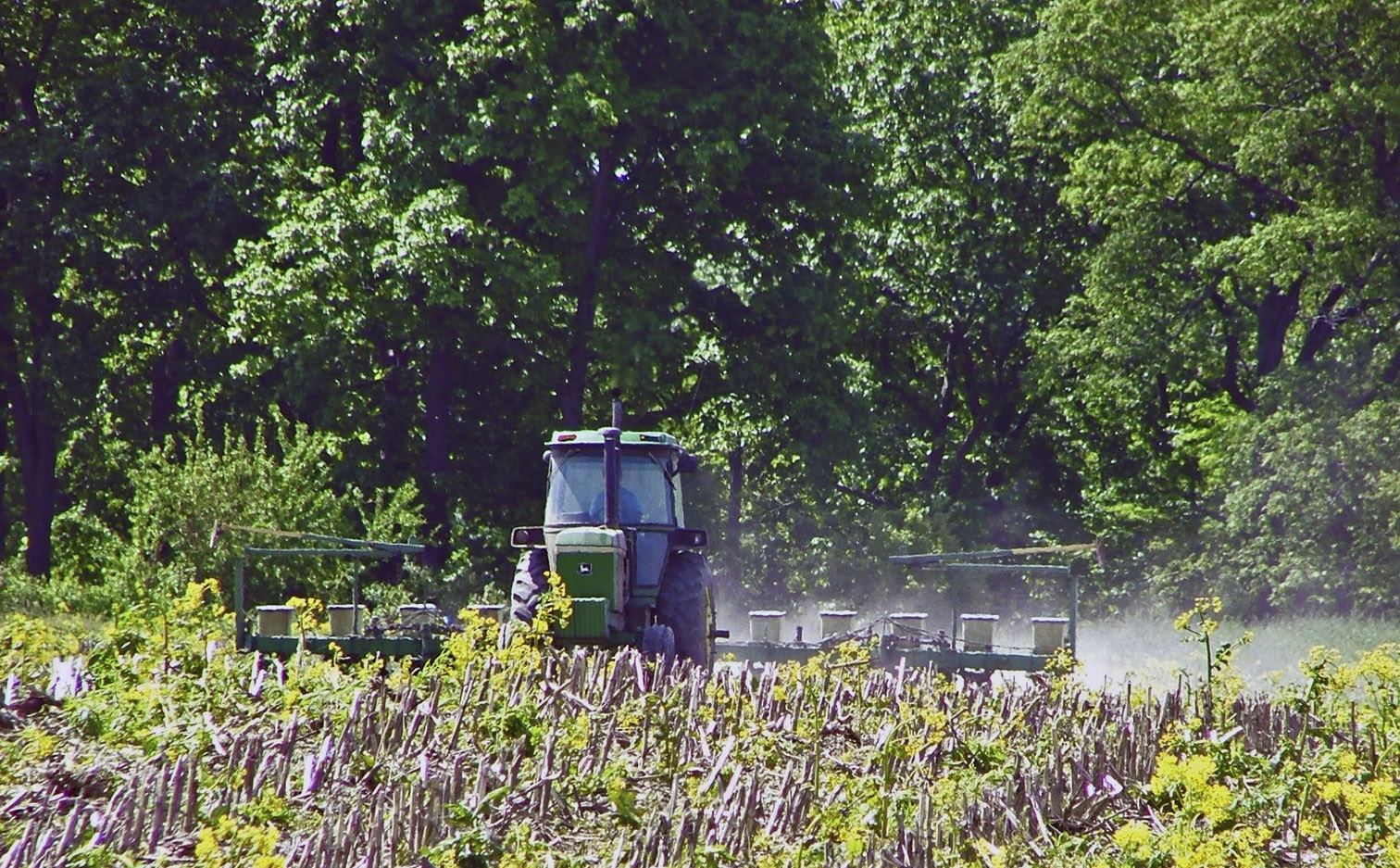
The Numbers
About 350 million hectares – up to 25 percent of the world’s cropland – could be planted with cover crops. That’s an area six times the size of Texas.
Practicing conservation agriculture could sequester up to 372 million tonnes of carbon dioxide equivalent per year (MtCO2e/year). That’s comparable to the emissions from 79 million passenger vehicles per year.
The Challenges
Cover crops have the potential to improve soil fertility, increase yields and retain soil moisture to mitigate the effects of drought. However, more research is needed to fully demonstrate that those benefits can consistently offset the costs of planting cover crops.
One of the challenges to conservation agriculture will be disseminating knowledge to farmers about what type of cover crop or crop mixture to plant, when to plant, how deeply to plant and, in some cases, what new equipment might be necessary. Already, many farming groups and conservation groups are actively educating farmers about the use of cover crops, but more effort will be needed to spread that knowledge to growers around the world.
Moving Forward
Cover crops aren’t suitable everywhere, such as in some areas in the tropics that are already double-cropped. However, this pathway could be applied to many croplands around the globe.
Conservation agriculture is a low-cost pathway that can be implemented by farmers relatively quickly and easily as part of their standard business practice. Indeed, many farmers are already successfully using cover crops today.
When synthetic fertilizers are applied to croplands, excess nitrogen is released to the atmosphere or carried away by water. That nitrogen is emitted into the air in the form of nitrous oxide, a greenhouse gas 300 times more potent than carbon. Proper nutrient management ensures that the amount of nitrogen applied to the field does not exceed the amount that the plants can absorb. Nutrient management also ensures fertilizer application is timed to avoid unnecessary runoff and reapplication.

The Numbers
Realizing the potential for cropland nutrient management will require farmers to apply best practices in nutrient management across nearly the whole global cropland area of 1.4 billion hectares.
Managing nutrients in croplands could prevent the release of up to 635 million metric tons of carbon dioxide equivalent per year (MtCO2e/year). That’s comparable to the emissions from 134 million passenger vehicles per year.
The Challenges
The primary challenge to improving nutrient management will be disseminating information to farmers and effectively encouraging them to implement best practices. That may be particularly challenging where new methods might require more planning and monitoring than the business-as-usual approach.
In some regions, there are existing policies, originally designed to stimulate agricultural production, that actively subsidize the overuse of fertilizer. In such cases, policy changes will be necessary to reduce fertilizer use.
Moving Forward
To maximize the potential for this pathway, the world’s farmers would need to adopt the standard of nutrient management practiced in North American and Western European agriculture.
While the scale of this pathway is large, improving nutrient management is a very low-cost intervention that can be implemented immediately. More efficient use of fertilizer can reduce a farmer’s costs without reducing productivity. A large improvement could be realized simply by disseminating information about best practices among regions such as East Asia, where fertilizer use is unnecessarily high.
In the future, further improvements could come from precision agriculture technologies and alternative forms of fertilizer.
Livestock are a significant source of greenhouse gas emissions, but improved efficiency can help to curb those emissions. Reducing the total number of livestock needed to meet the demand for meat and dairy products will reduce the amount of carbon released by ranching.
Proper animal management techniques include choosing improved livestock breeds, increased reproductive performance, lower mortality and increased weight gains. By implementing these animal management techniques, livestock will feed growing populations more efficiently.

The Numbers
Proper livestock management could be applied to nearly one and a half billion head of cattle worldwide.
Animal management could prevent the release of 60 million tonnes of carbon dioxide equivalent per year (MtCO2e/year). That’s comparable to the emissions from 13 million passenger vehicles per year.
The Challenges
There are economic barriers and capital costs that can make it difficult for ranchers to purchase new livestock breeds and change other existing management practices. In addition, more research is needed to understand the best methods for improving animal management.
Moving Forward
Due to the capital costs associated with changing animal management practices, this is a moderate- to high-cost pathway per ton of carbon. Despite the economic and logistical hurdles to improve animal management, however, more efficient processes often provide economic benefit to the ranchers.
Many ranchers are already applying animal management strategies such as using breeds that gain weight rapidly or using reproductive management practices that yield high conception rates. Such techniques are available now and ready for wider implementation.
Livestock release methane as a byproduct of digestion. Methane is approximately 34 times more potent as a greenhouse gas than carbon dioxide, and methane released from animal digestion (known as enteric methane) is a significant source of greenhouse gas emissions around the world.
Feeding animals energy-rich, easily digestible cereal grains can reduce the amount of methane that’s released.
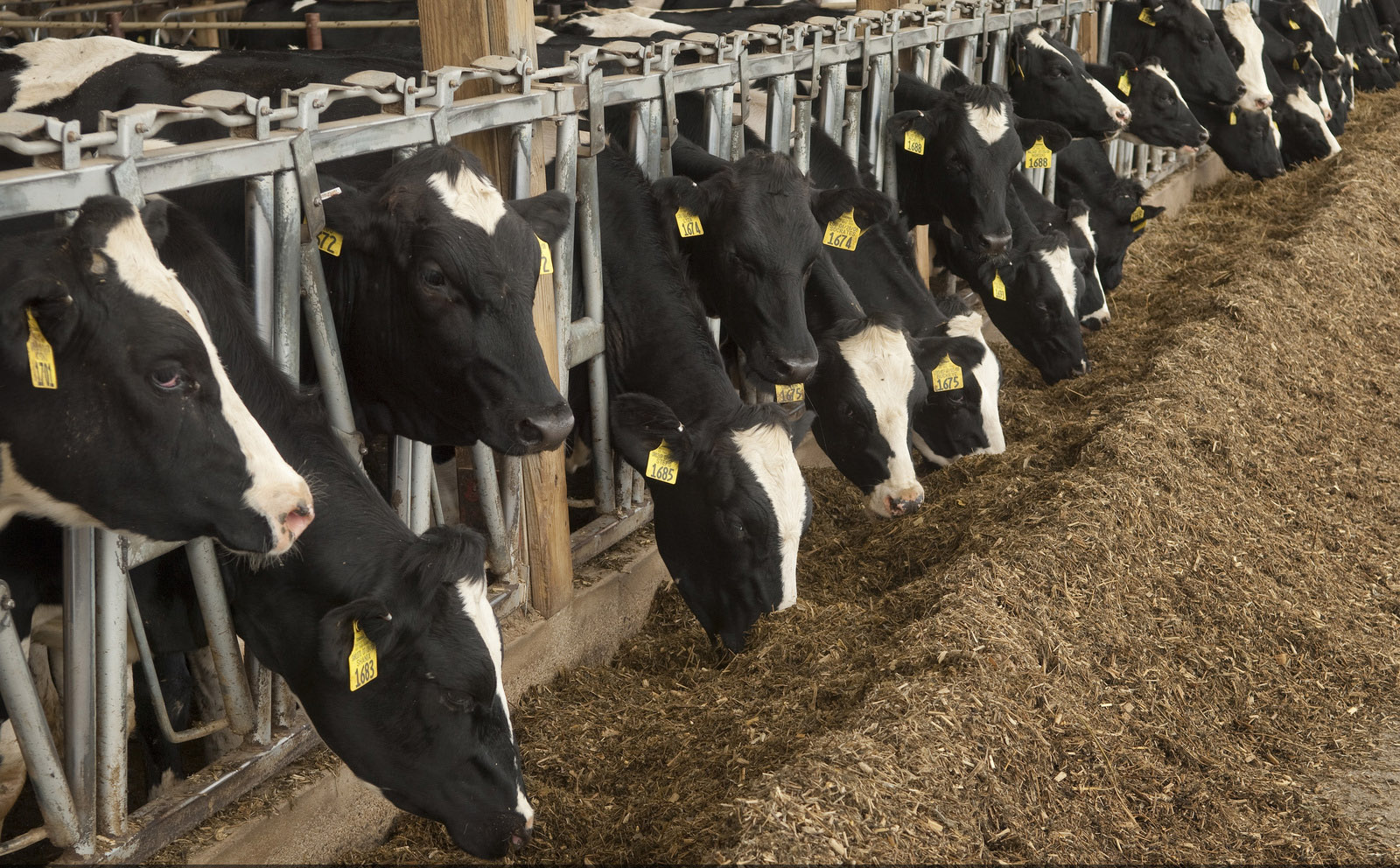
The Numbers
Improvements in livestock feed could be applied to nearly one and a half billion head of cattle around the world.
Improving feed for livestock could prevent the release of 204 million tonnes of carbon dioxide equivalent per year (MtCO2e/year). That’s comparable to the emissions from 43 million passenger vehicles per year.
The Challenges
One of the main challenges to improving livestock feed will be to tailor new practices related to feed quality to local conditions. This will involve issues related to feed availability and economic returns.
Beyond feed itself, there may be opportunity for feed additives or treatments to be applied to reduce enteric methane emissions. More research is needed to explore the scientific and economic aspects of these approaches, and whether they might have unintended consequences for animal health or food safety.
Moving Forward
Due to the economic hurdles of changing existing feed practices in many regions, this pathway will likely be a moderate- to high-cost option per ton of carbon. While there are opportunities to further develop new feed-improvement techniques and tools, many feed improvements are available immediately – and in fact, many ranchers already provide improved feed to their livestock.
Legumes are notable for their ability to fix nitrogen in the soil, reducing the need for the addition of nitrogen fertilizer. Planting legumes such as alfalfa, clover, peas or beans in managed pastures provides increased forage for cattle and other livestock, while also adding carbon to the soil.
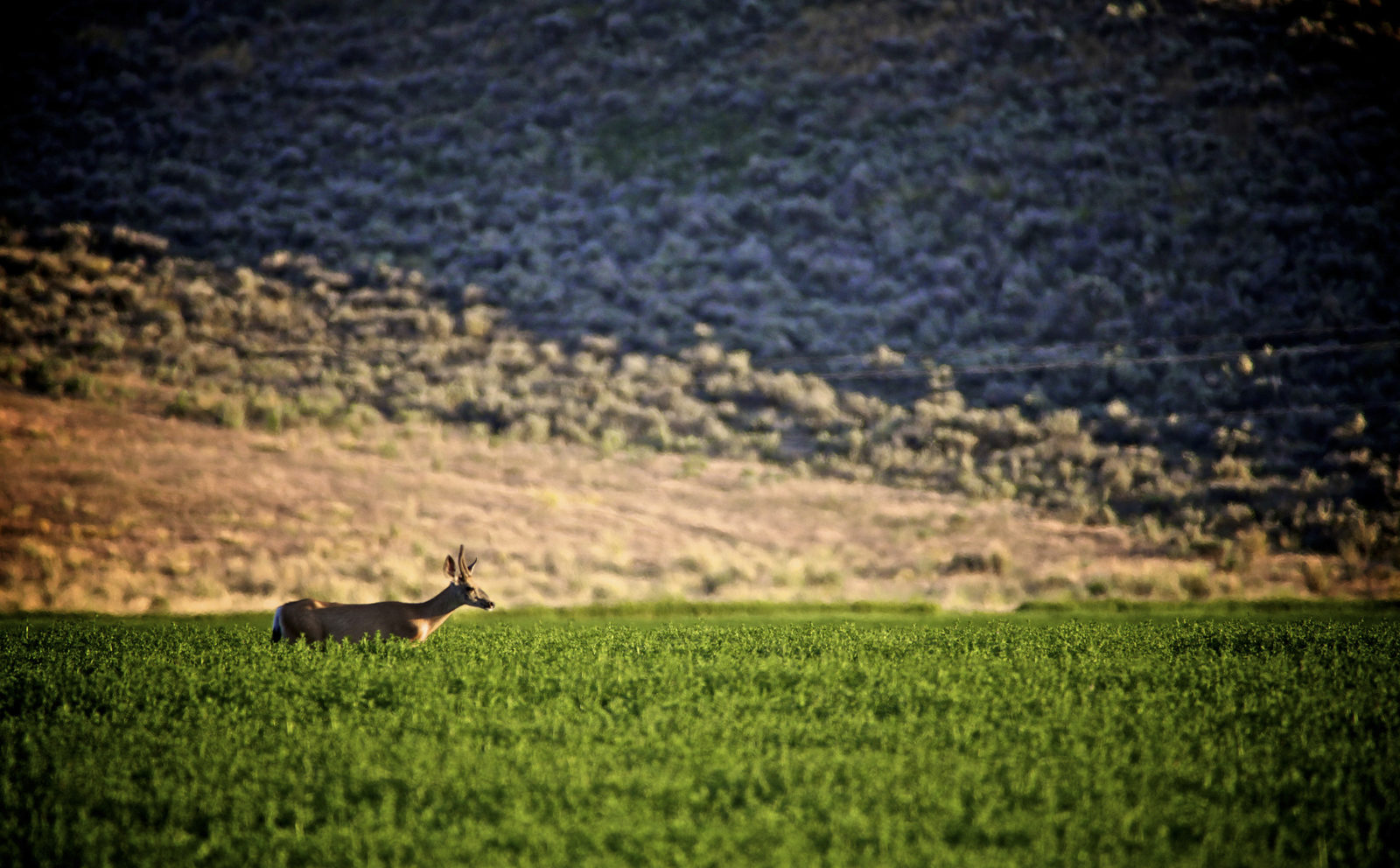
The Numbers
Legumes could be planted in pastures across 72 million hectares globally, an area about twice the size of Japan.
Planting legumes in pastures could sequester up to 132 million tonnes of carbon dioxide equivalent per year (MtCO2e/year). That’s comparable to the emissions from 28 million passenger vehicles per year.
The Challenges
Compared to other grazing practices, planting legumes in pastures has a more limited geographic potential, because it only applies to planted pastures that have a relatively low abundance of legumes to start with. However, there are no major challenges to implementing more widespread planting of legumes in pastures.
Moving Forward
In quantifying the benefit of legumes in pastures, native prairies or areas where planted legumes might displace native plants were not included in the study. Yet in many areas, opportunity exists to seed planted pastures with legume species.
This is a low-cost pathway that is ready to implement immediately. In fact, many ranchers have already overseeded their pastures with legumes to improve forage and productivity.
Intensive grazing on grasslands reduces the productivity of plants and reduces the amount of carbon stored in the soil. Optimizing the intensity of grazing reduces carbon loss to the atmosphere.
Ranchers can optimize grazing through methods such as rotational grazing (which involves local monitoring of livestock movements and grazing patterns to allow grass to recover) and bunched grazing (in which livestock are tightly concentrated in an area for a set period of time, then moved on to let the land recover).
Such practices are not only beneficial for carbon storage, but also increase profits for ranchers, reduce soil erosion and improve wildlife habitat.
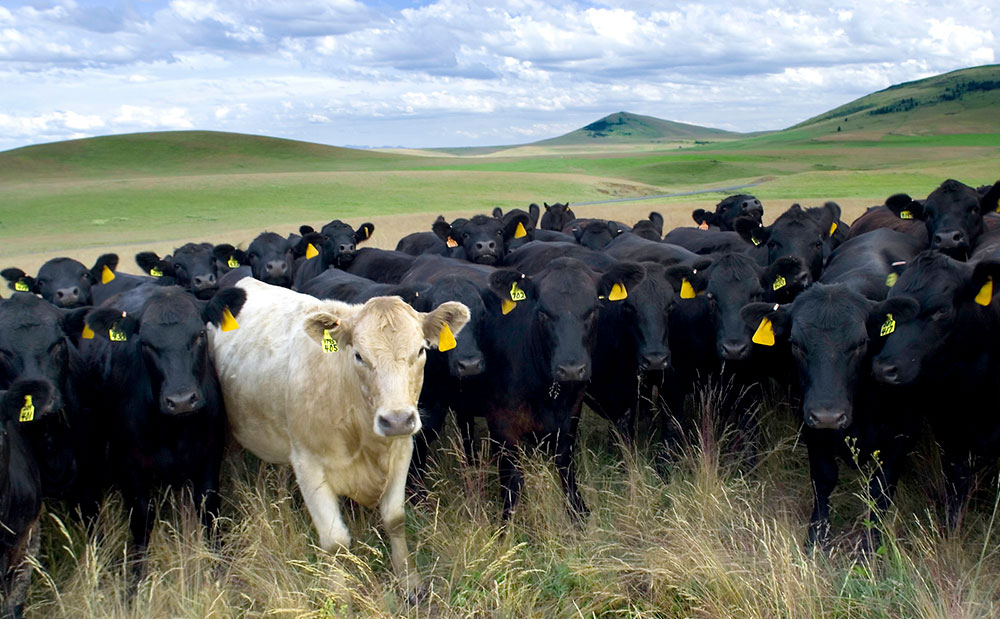
The Numbers
Optimizing the intensity of grazing is an intervention that could apply to 712 million hectares of rangeland worldwide – an area nearly the size of Australia.
Improved grazing practices could sequester up to 89 million tonnes of carbon dioxide equivalent per year (MtCO2e/year). That’s comparable to the emissions from 19 million passenger vehicles per year.
The Challenges
To better quantify carbon soil potential in different regions, more research is needed to understand the relationship between specific grazing practices and soil carbon in various climates and soil types.
Implementing this pathway around the world will also require educating ranchers about improved practices and the economic benefits they can offer.
Moving Forward
Improving the intensity of grazing is a low-cost natural climate solution that can be implemented quickly by ranchers as part of their standard business practice. Many ranchers are already using these practices to maximize productivity on their rangelands.
Most of the world’s rice is grown in fields that are flooded year-round. When rice is harvested, most of the remaining plant material is left in the ponds, where it sinks to the bottom and begins to decay. Plants that decay in that low-oxygen environment generate methane gas.
Rice cultivation can be improved by alternately wetting and drying rice fields, or by draining flooded rice fields once during the mid-season. Such methods reduce the time that decaying plant material is submerged, thereby reducing methane emissions.

The Numbers
Improved rice cultivation could be applied to some 163 million hectares worldwide, an area roughly the size of Mongolia.
Improved rice cultivation would prevent the release of up to 159 million tonnes of carbon dioxide equivalent per year (MtCO2e/year). That’s comparable to the emissions from 34 million passenger vehicles per year.
The Challenges
In many Asian countries, farmers have little technical capacity to remove water from their fields during the rainy season.
More research is also needed to better understand the effect of water management on yield. Water management has been shown to increase yield in some cases and decrease yield in others, for reasons that are not yet clear. Continued research is needed to determine where and how water management can be most effectively implemented.
Currently, rice farmers have little incentive to improve their water management practices. Incentives such as subsidies might be necessary to improve rice production on a broader scale.
Moving Forward
In a best-case scenario, water management of rice fields can reduce methane emissions by as much as 90 percent compared to full flooding. And field experiments show that the practice maintains, and in some cases improves, rice yields. Further, many of the world’s rice-producing regions have water shortages, making water management an attractive option for farmers.
In some regions, improved rice cultivation will be expensive to implement. But in others, it would be a relatively low-cost effort. In location such as India, the southern United States and parts of the Philippines, where farmers irrigate by pumping groundwater, the ability to engage in water management already exists. And doing so could save fuel costs related to operating the pumps. In areas with the technological capacity, improved rice cultivation could be implemented immediately.
Nearly half of the planet’s land is degraded. Restoring forests, peatlands and mangroves globally can reduce global greenhouse gas emissions and store additional carbon up to 3 gigatons annually, as well as generate major economic, employment and biodiversity benefits.
Forests cover one-quarter of the world’s land mass and hold as much carbon as the atmosphere, making them the most important ecosystem for the global carbon cycle. Deforestation is the single largest component of emissions from land-use change; and avoiding deforestation, reforestation and forest management hold the bulk of global mitigation potential. Forests have been a focus of climate policy for decades, and the state of science, economics and policy is fairly advanced.
The Paris Climate Agreement stated that countries should protect and enhance forests in order to maintain and create carbon ‘sinks’. To this end, the researchers located the greatest additional emissions reduction potential in reforestation, through tree-planting and natural regeneration in formerly forested lands with less than 25% tree cover, while avoiding areas cleared for crop production. This approach can deliver 3 gigatonnes of cost-effective carbon emissions reduction by 2030, equivalent to taking 642 million gasoline-burning cars off the road, 5% more than through avoided forest conversion. Both these pathways are complementary to the need to maintain the absorptive capacity of intact ecosystems, especially intact forests, which take up around a net amount of around 11 gigatonnes of CO2 per year at little incremental cost beyond protective measures.
Natural forest management meanwhile offers close to a gigatonne (882 million tonnes) a year in cost-effective emissions reductions, equivalent to taking 189 million cars off the road, through the wider deployment of sustainable forestry practices such as reduced-impact logging (RIL), liana cutting and extending harvest cycles, and without reducing wood production.
Forests clean our air, enhance water security, support critical biodiversity and serve as the world’s oldest and most proven carbon storage technology.
Select a pathway to learn more:
Around the world, huge swaths of temperate and tropical forests have been cleared for human activity. Many of those lands are being used productively to grow food and raise livestock that we need and, with yet better practices, can sustainably yield even more food. Yet many other deforested lands are degraded, produce less than one cow per hectare, and are good candidates for reforestation.
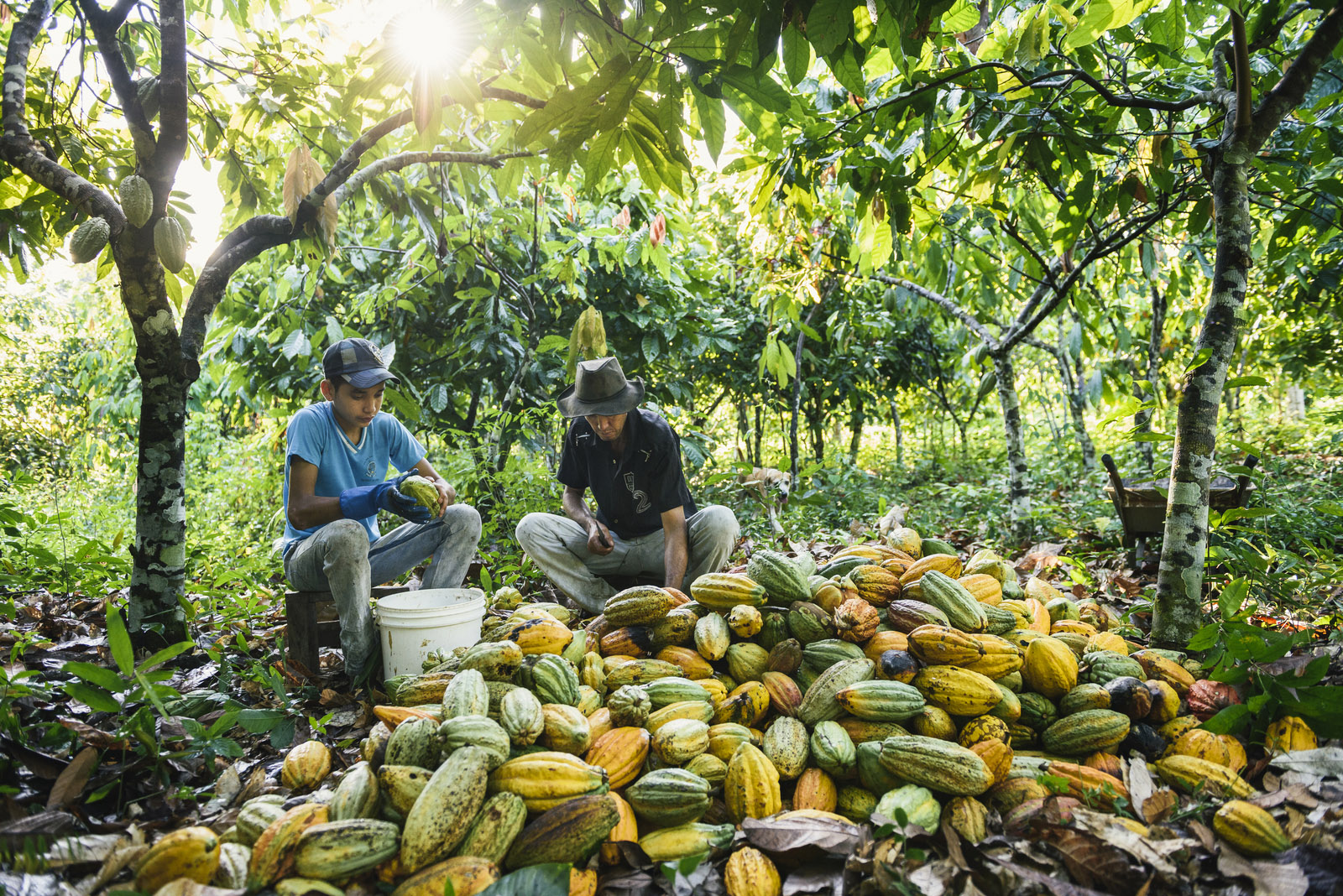
The Numbers
More than 200 million hectares of deforested land provide little or no food production, and are eligible for cost-effective reforestation. That’s an area around three times the size of Texas.
Reforesting these lands would sequester 3 gigatonnes of carbon dioxide equivalent per year (GtCO2e/year). That’s comparable to the emissions from 642 million passenger vehicles per year.
The Challenges
In some cases, reforestation can be a relatively expensive form of land-based sequestration, and can involve difficult changes in livelihoods. In other cases, reforestation can be inexpensive and as easy as not burning grazing land.
Moving Forward
Restoration opportunities exist around the world, in both temperate and tropical regions. Our analysis excluded reforestation in boreal regions since scientists question the climate benefits of reforestation in these regions. By investing now in both implementing known reforestation opportunities, and the science of mapping wide-scale reforestation opportunities, reforestation could provide the largest land-based climate mitigation opportunity while providing cleaner water, cleaner air, flood control, more fertile soils, not to mention wood and tree crops.
Grasslands cover as much as one-third of the world’s lands, and grazing is the most extensive land use on the planet. Grasslands store fairly high levels of carbon in their soils, but a significant fraction is being lost through conversion to cropland or overgrazing. Livestock are also responsible for the majority of all non-CO2 emissions from land use.
About 10% of the earth’s land area is intensively cultivated to produce crops. Most agricultural soils have lost a large fraction of their original soil carbon, and there is considerable potential to restore this through better management. More efficient use of fertilizers can also have a large impact on global emissions of nitrous oxide, another of the six principal greenhouse gases.
In the grasslands biome, the researchers identified cropland nutrient management as offering the greatest cost-effective emissions reductions, through reduced use of fertilizers and sprays that release nitrous oxide, a greenhouse gas 300 times more potent than CO2, into the atmosphere. This would require reduction in the use of fertilizers and sprays employed by farmers worldwide, contributing a reduction of 635 million tons of carbon emissions equivalent a year by 2030, like taking 134 million cars off the road.
The next agriculture revolution will require solutions that not only increase food production, but also sustain the health of our communities, our land and our climate.
Select a pathway to learn more:
Trees absorb and store vast amounts of carbon throughout their life. Farmers can plant trees on croplands to provide windbreaks and shelter for crops, prevent erosion, diversify production and maintain moisture levels, while reducing carbon emissions. Planting trees in croplands can be done on a large share of the world’s agricultural lands without lowering production.
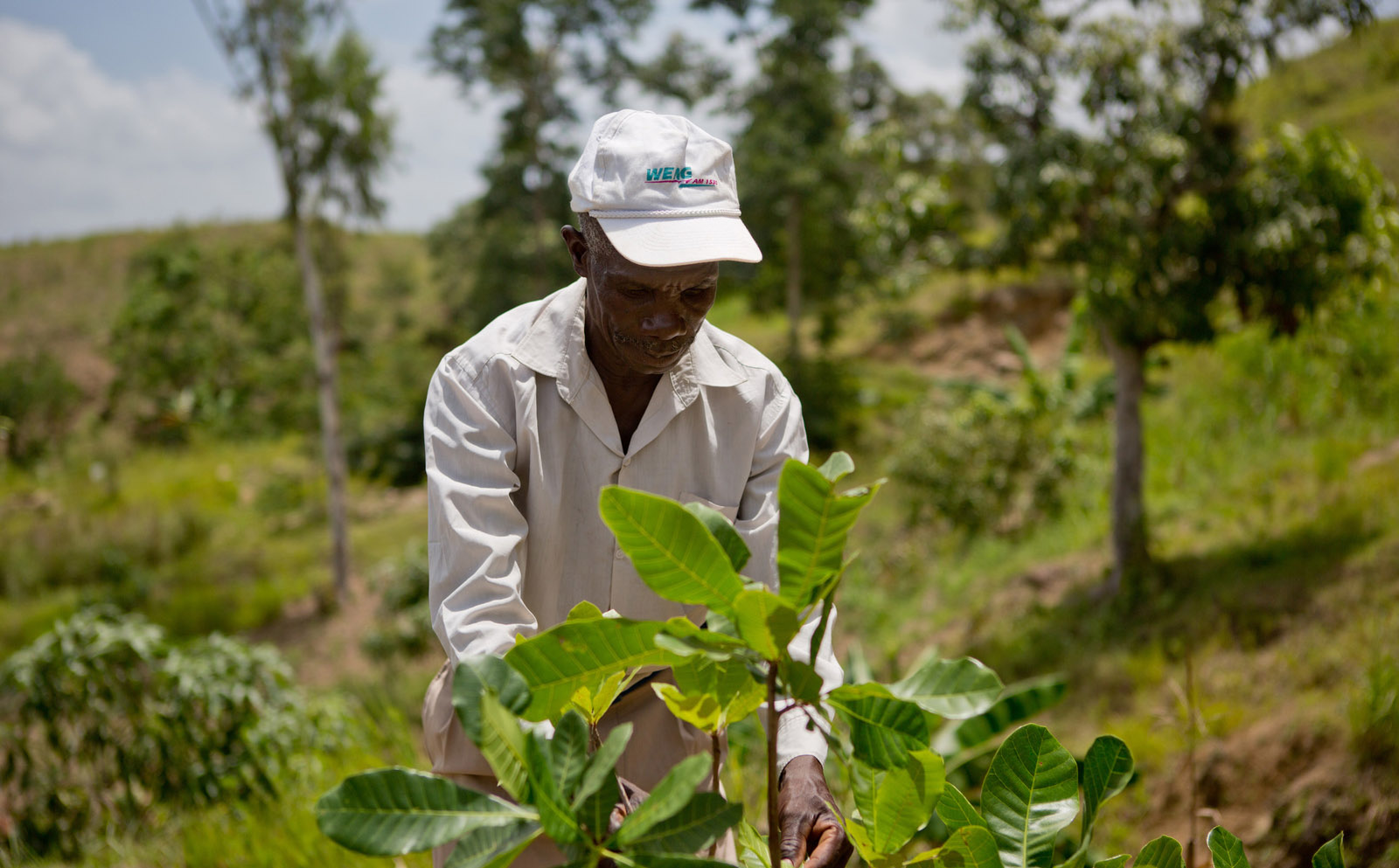
The Numbers
Trees could be planted in croplands across 608 million hectares worldwide – an area over half the size of the United States. We estimate that holding warming to below 2 degrees C would need the application of agroforestry systems across 322 million hectares, an area about the size of India.
Planting trees in agricultural lands could store 439 million tonnes of carbon dioxide equivalent per year (MtCO2e/year). That’s comparable to the emissions from 94 million passenger vehicles per year.
The Challenges
One of the main challenges to agroforestry systems lies in understanding and communicating the benefits to farmers, and providing them with the technical support and extension services to encourage them to shift to a new (sometimes counterintuitive) method of farming. Agricultural policies and incentives may need to be changed or created to promote the adoption of agroforestry systems.
More research is also needed to map the regions where various tree-planting practices are likely to have net economic benefits that offset the loss of agricultural area to trees.
Moving Forward
Agroforestry could be applied to croplands worldwide, and the practice could be implemented immediately. While many different agroforestry systems have been demonstrated, three systems currently stand out:
- Windbreaks: planting belts of trees and shrubs to protect fields and homes from wind.
- Alley cropping: planting lines of productive trees within croplands.
- Farmer-managed natural regeneration (FMNR): managed recovery of native trees within dryland agriculture systems to protect and improve soils.
While some agroforestry systems are costly, others, such as FMNR, are very low-cost. In some regions, planting trees in croplands would bring net benefits.
Freshwater wetlands cover less than 5% of the world’s land area, but store vast quantities of carbon per hectare in the form of peat soils. Protecting peatlands and rewetting drained peatlands can prevent massive carbon emissions, reduce destructive peat fires, and improve water quality.
Protection and restoration of coastal ecosystems (mangroves, salt marshes and seagrass beds—or ‘blue carbon’) has a relatively low global mitigation potential due to their small distribution but these ecosystems can store carbon at high rates per hectare. They often also provide significant benefits to society: supporting ocean fisheries, protecting coasts, tourism and filtering run-off and pollution that can be worth many thousands of dollars per hectare per year.
The greatest cost-effective emissions reduction potential in the wetlands biome was found to be through avoided peatland impacts—the protection of marshes and peat bogs is a more effective long-term carbon store than forests. It is estimated that 760,000 hectares of peatlands are lost globally each year, the majority being cleared and drained for palm oil developments. Their cost-effective protection could prevent 678 million tonnes of carbon emissions a year by 2030—comparable to removing 145 million cars from the streets.
Wetlands – freshwater and coastal – make up a small percentage of the world’s lands, but they have a higher actual storage of carbon per hectare of land than any other system.
Select a pathway to learn more:
Coastal wetlands–mangroves, marshes, and seagrass beds–store huge amounts of carbon despite their relatively small total area. For example, while only occupying approximately 14.5 million hectares of tropical coastlines, mangroves are among the most carbon rich forests in the world on a per-hectare basis.
The true potential for mangrove climate mitigation rests in the soil, where, left undisturbed, the carbon can remain for centuries or more. Yet around the world, many coastal wetlands are being damaged by human activity. Drainage and pollution are degrading mangroves, salt marshes and seagrass beds at an alarming rate, releasing carbon that has been stored for millennia into the atmosphere.
Fortunately, coastal wetlands can often be restored by reducing pollution, replanting lost vegetation and/or repairing the natural flow of water.

The Numbers
According to the latest research, some 30 million hectares of degraded coastal wetlands could be restored–an area roughly the size of Italy. Of that total, 59 percent is seagrass beds, 34 percent is mangroves and 7 percent is salt marsh.
Restoring those damaged wetlands could sequester up to 200 million tonnes of carbon dioxide equivalent per year (MtCO2e/year). That’s comparable to the emissions from 43 million passenger vehicles per year.
The Challenges
Restoring wetlands can be straightforward from a technical point of view. Mangroves, for instance, are easily planted, but in many cases restoring the hydrology alone is all that is needed to allow natural recolonization. But the opportunity cost for such restoration is sometimes high where former wetlands are now developed, or used in productive aquaculture.
Another common challenge comes from obscure land tenure, which has greatly hindered some efforts to ascertain ownership or to undertake restoration in appropriate locations relative to the tidal cycle.
In addition, seagrass restoration is largely dependent on improving on-shore watershed and nutrient management practices. Such management policies can be expensive and often take many years to implement fully.
Moving Forward
Due to the technical costs of restoration, re-establishing coastal wetlands can be a relatively high-cost pathway although it varies according to ecosystem and geography. For example, mangrove restoration in developing countries is low cost compared to tidal marsh restoration in the US. Nevertheless, it’s a pathway that is available to implement right now. Indeed, efforts to restore mangroves, salt marshes and seagrasses are already underway in many parts of the world, and there are large areas, particularly of abandoned or unproductive aquaculture where restoration would yield rapid returns in both carbon and co-benefits.
In future, mangrove restoration is likely to be most important in areas that have experienced high rates of loss, including South Central America, Indonesia, Papua New Guinea and the Philippines. Seagrass restoration will be important in the Eastern U.S. and the South Pacific. For salt marshes, the restoration benefit will be greatest in the U.S., which contains more than 80 percent of the world’s salt marshes.
Peatlands are considered degraded when they’ve been drained or subjected to altered water flow but have not been completely converted for other land uses. In this degraded state, the carbon stored in plant material buried in peat soil is released into the atmosphere. Dried peat is also susceptible to ground fires, releasing large amounts of stored carbon in short order.
Degraded peatlands are responsible for a large portion of carbon emissions from natural systems. Peat soils can be restored, however, to prevent the further breakdown of stored plant material and to capture new plant debris from vegetation growing aboveground. The primary method of restoration involves “re-wetting” or restoring the natural flow of water and soil saturation.
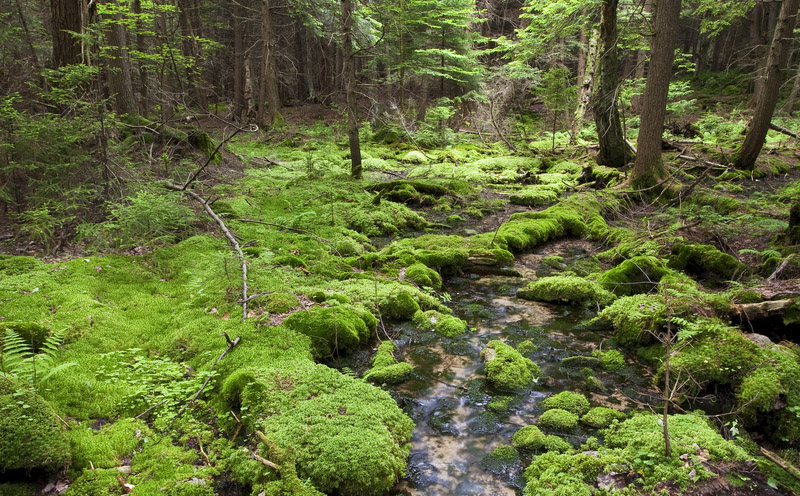
The Numbers
Around the globe, 46 million hectares of peatlands are in a degraded state and emitting greenhouse gases into the atmosphere. That’s an area slightly larger than the state of California.
Peatland restoration would prevent the release of 394 million tonnes of carbon dioxide equivalent per year (MtCO2e/year). That’s comparable to the emissions from 84 million passenger vehicles per year.
The Challenges
The primary challenge to peatland restoration is economic. Altering drainage patterns and local hydrogeography can be costly. We estimate that only 18 percent of the total mitigation potential for peatland restoration can currently be implemented at a low cost ($10 per tonne of CO2e per year).
Moving Forward
Peatlands are rare, covering only about 3 percent of the Earth’s surface. Yet they provide important habitat for many species. Peatlands in Indonesia, for instance, provide prime habitat for orangutans. Restoration efforts will also have important benefits for biodiversity. Despite the economic hurdles, the technical capacity for restoring peatlands already exists and could be implemented immediately, especially in lower-cost regions.
